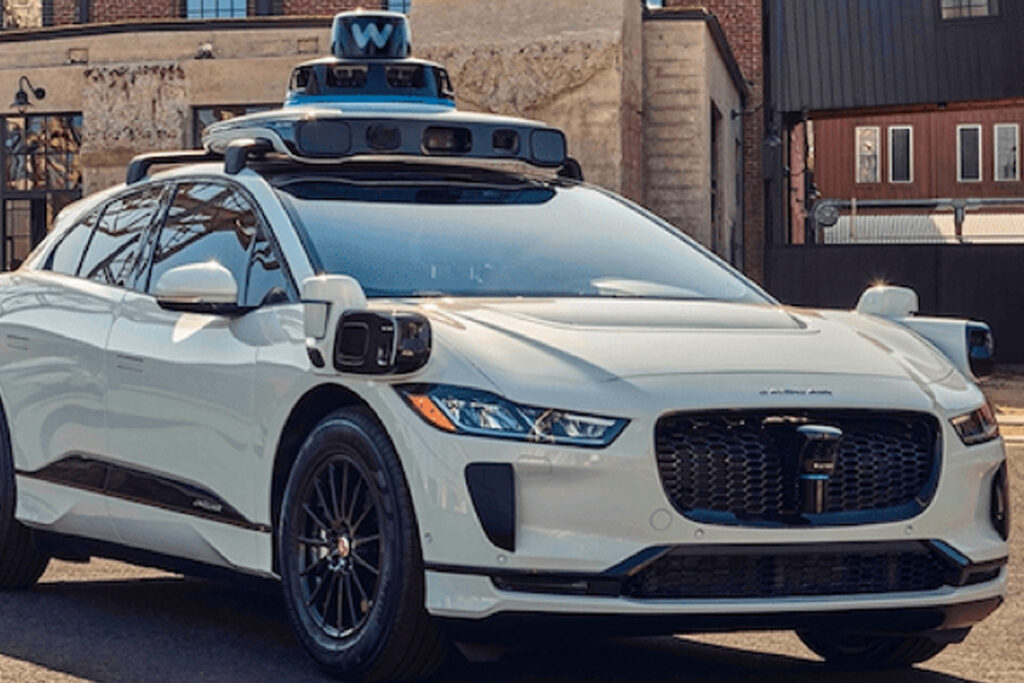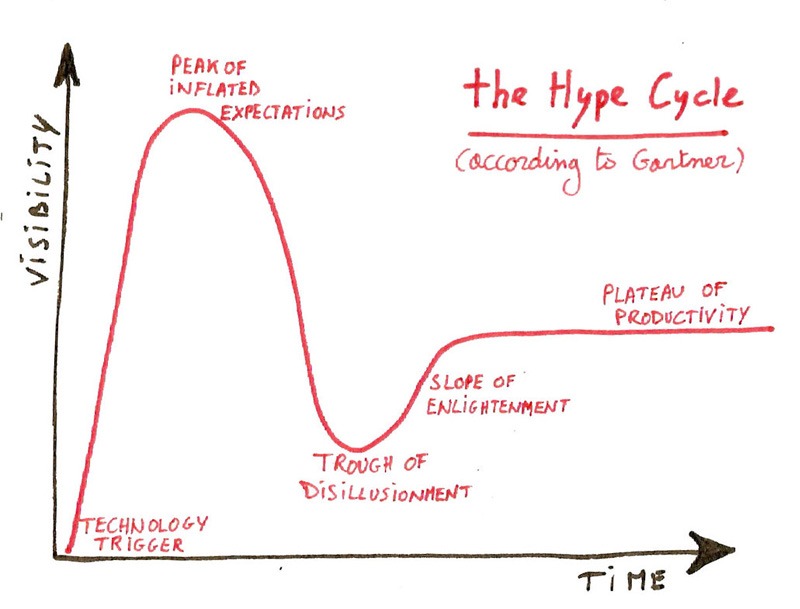Autonomous Driving is Here and Will Be Good for Cycling

I’m not an expert, but for the past decade I’ve been following developments in autonomous driving quite closely. I also consume a lot of podcasts with tech / transportation / cycling / micromobility themes.
Like anything that’s radically different, there has been a lot of hype and fear in roughly equal parts in relation to media reports and discussions around autonomous vehicles (AV’s).
Although I’ve written next to nothing about autonomous vehicles until now, a recent in article in www.endgaget.com caught my eye and prompted this article.
I think that autonomous vehicles will have a big impact (no pun intended) upon cycling and micromobility.

Where is Autonomous Driving on the Hype Cycle?
If you follow the tech world, one term you may have come across is the “Hype Cycle”. This is a subjective description of how humans react to new technologies.
Its five stages are, Technology Trigger, Peak of Inflated Expectations, Trough of Disillusionment, Slope of Enlightenment and Plateau of Productivity.
Depending upon the technology, it could take years, even decades, for the hype cycle to progress through these stages. I’m going to run through these in order in relation to AV’s and then draw some conclusions.
Technology Trigger
AV’s have been around longer than you think. Mercedes in Germany was doing major research in from the mid 1980’s. Japan, even earlier.
I was surprised to read that almost 30 years ago, a fully autonomous vehicle called Navlab 5 drove several thousand kilometres from east to west across the USA. Sure, it cost millions of dollars and was stuffed full of computers, but this was achieved in 1995.
Inflated Peak of Expectations
Throughout the early 2000’s there was much hype about the imminent transformation of our cities and lifestyles thanks to AV’s.
But developers soon realized that this is a technology that’s much harder to safely implement in the real world than in a controlled environment. Particularly when society understandably demands far higher safety standards from this new technology than what we accept from human driving.
Trough of Disillusionment
In today’s social media fuelled world of instant gratification, when something takes years to gradually improve, most people get bored and move on to the next bright shiny thing.
In the case of autonomous driving, I think that trough has lasted a decade and is probably still the phase that we’re in, if you asked most people for their opinion.
Slope of Enlightenment
I think we’re at this stage in the hype cycle now.
My evidence? On 10th May 2024 Waymo announced that it has passed 50,000 paid trips per week by customers using its robotaxis in San Francisco, Los Angeles and Pheonix. It has also passed a million trips in total.
Waymo credited reaching this milestone to its “safe and deliberate” approach. Waymo is a software company that is a subsidiary Alphabet, which is also the parent company of Google.
Originally called The Google Self Driving Car Project, this project began on 17th January 2009 and countless billions have been invested so far. In 2023 2,500 people were working at Waymo. In other words, they have deep pockets and have not been deterred by 14 years of hard slog and setbacks.
Plateau of Productivity
This is the final stage of the hype cycle, when the new technology becomes mainstream. While I think this is still years away for AV’s, mainly due to different regulatory hurdles in every state and country across the world, I think we’ve reached the threshold of a key accelerant.
Until now, Waymo and others have poured many billions of dollars into AV’s with next to zero commercial return.
At 50,000 paid rides per week, all with no driver, let’s say at an average of $20 per ride, that means a million dollars per week of revenue, and growing fast. Ignoring the billions in ‘sunk cost’ investment, what’s the biggest cost of any taxi service, including Uber? The driver.
Take away that cost, also remembering that all the Waymo AV’s are electric, so they have far lower fuel costs and suddenly, we could be approaching a financial tipping point. That could be a trigger for exponential growth.
Of course, just because they’re doing a rapidly growing number of rides in San Francisco, Los Angeles and Pheonix right now, doesn’t mean that robotaxis will be on the streets of Australia’s cities next week, or next year. But if the growth continues with a sufficiently low number of crashes, as I predict it will, then I expect to see quite rapid expansion. It will be more a question of “When?”, rather than “If”.
What Does This Mean for Cycling?
I think that widespread adoption of AV’s will make cycling a safer and more enjoyable experience.
According to the NHTSA (National Highway Traffic Safety Administration) up until 15th Jan 2023 there had been no fatalities from full self-driving (level five5) AV’s. If you’re not familiar with the five levels of AV’s you can read a good explanation here.
The much publicised fatalities in recent years involving Tesla’s were level three AV’s.
In both the USA and Australia, the road toll is rising sharply and a big element of that is increasing pedestrian and cycling fatalities.
Computer controlled autonomous driving systems will never be perfect.
But they don’t exceed the speed limit. They don’t get sleepy. They don’t drink drive. They don’t get distracted by their phone – too many cyclists have died already due to this latest problem.
Autonomous vehicles don’t think it would be funny to teach a few cyclists a lesson by passing too close. They won’t do any number of other dangerous practices that most experienced cyclists have been subjected to more than once.
Did you know that globally, about 1.3 million people die each year from vehicle crashes? Millions more are seriously injured, many with life-long detrimental consequences.
In many countries, death by motor vehicle is the most common cause of death amongst young people.
I predict that as they are progressively rolled out in more cities and countries, AV’s will reduce our road toll significantly.
I have read predictions that autonomous vehicles will result in even more traffic on the roads. I’ve read and listened to complex arguments both for and against this prediction that I’m not going to delve into here. In my opinion, the jury is still out on this question.
There are also arguments that cities will be modified in ways that are detrimental to cyclists and pedestrians to make it easier for AV’s to operate. I think this argument is being disproved by the latest Waymo announcement. With an increasingly valid sample size, we’re seeing that these vehicles can operate safely in the real world without modifying our cities.
We already trust our lives to so many computerised systems that in past eras would have been unthinkable. Everything from autopilot in planes to computer modelled bridges and buildings to laser surgery.
AV’s may still seem to many like a bridge to far for many people. The natural human condition is to resist change. AV’s are a big new change, but they’re just another step in our technological continuum.
In summary, I think that the benefits of AV’s will far outweigh the costs. For cyclists, I think their lives will become safer and less stressful.
